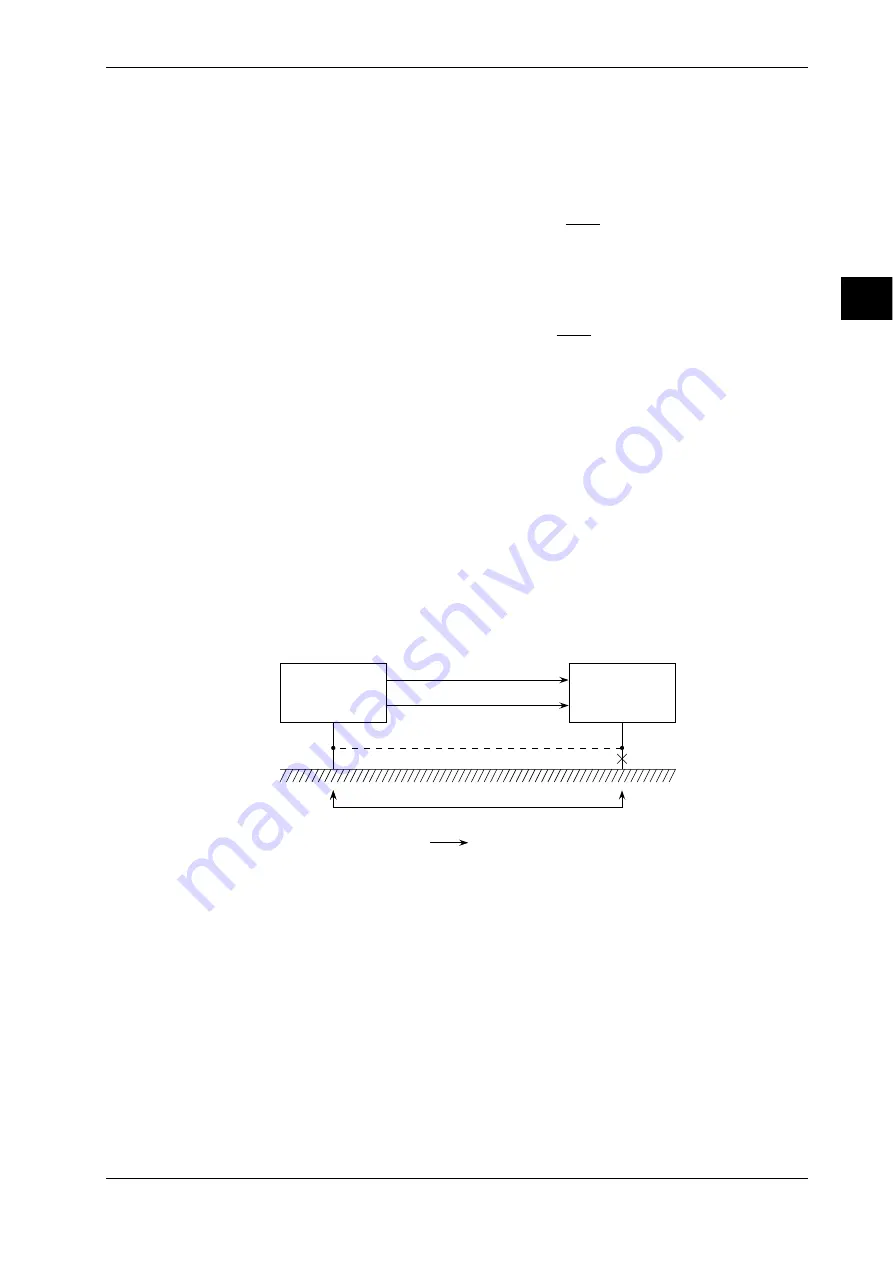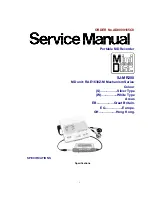
3-29
IM DR231-01E
Installation and Wiring
3
3.8 Countering Noise
In the figure on the previous page, due to common mode voltage E
CM
, noise currents i
1
and i
2
flow through the impedance to grounds Z
1
and Z
2
and coupling impedance Z
3
, resulting in the
generation of normal mode noise E
NM
between input terminals H and L. Like this, common mode
noise is converted to normal mode noise. The amp is equipped with a built-in filter and in case of
output E
O
the normal mode noise will be eliminated. This rate of conversion is called the
common mode rejection ratio and expressed by the following equation.
• Common mode rejection ratio
(CMRR)=20Log
E
O
E
C M
( d B )
Since the actual CMRR is expressed using the ratio of an error component output caused by
common mode noise to common mode noise, it contains the normal mode rejection ratio
(NMRR) expressed by the following equation.
• Normal mode rejection ratio
(NMRR)=20Log
E
O
E
N M
( d B )
The NMRR is a value that shows the ability to reject the output error (normal mode noise
component: E
NM
) by normal mode noise. Thus, this is also a very important value which shows
the resistance-to-noise characteristics of the measuring instrument.
Basics of Anti-Noise Measures (part 2)
Decreasing and Increasing Impedance
As described in the previous section, conversion of common mode noise into normal mode noise
causes an error in the measured output. In other words, prevention of such a conversion is the key
to anti-noise measures. As can be understood from the previous section, it is important to take the
following measures to reduce normal mode noise.
• reduce the wiring resistances R
1
and R
2
, including the resistance of the wires.
• increase the coupling impedance of common mode voltage E
CM
.
These are called the decrease and increase of impedance as basics of anti-noise measures.
In the above discussions, anti-noise measures have been described on the assumption that
common mode noise has already been given. In real applications, common mode noise often
occurs owing to grounding resistance as shown in the figure below.
Signal source
The instrument
H
L
One-point grounding
Grounding resistance and E
CM
Ground current
In such a case, perform one-point grounding as indicated by the dotted line, as an extreme
example of decreasing impedance, to equalize the potentials of the signal source and the
instrument. Rejecting common mode noise in this way is the basics of anti-noise measures.
Anti-Noise Measures in the Instrument Itself
Pulse width modulation type A/D converter (PWM type A/D)
This instrument uses a feedback pulse width modulation type A/D converter and has the
following features:
• Linearity and stability are good because of the feedback effect.
• Integration type A/D converter ensures excellent noise suppression.
If the integration time is equal to the noise period, the positive and negative sides of the shaded
part in the figure below cancel each other out and thus the average value becomes zero.
Содержание DR231
Страница 12: ...10 IM DR231 01E...
















































